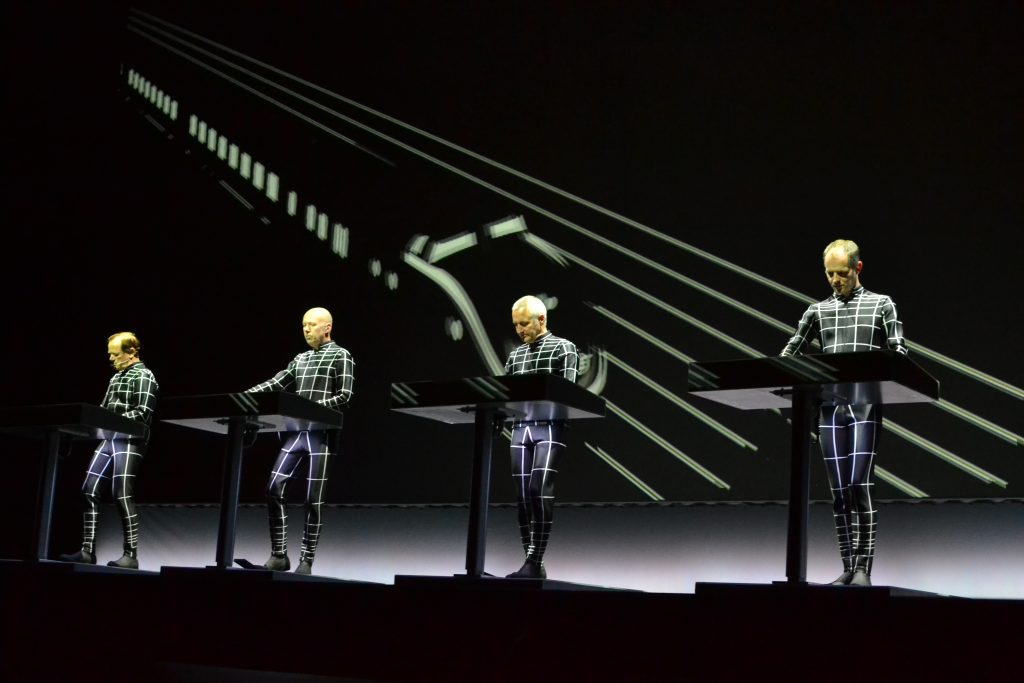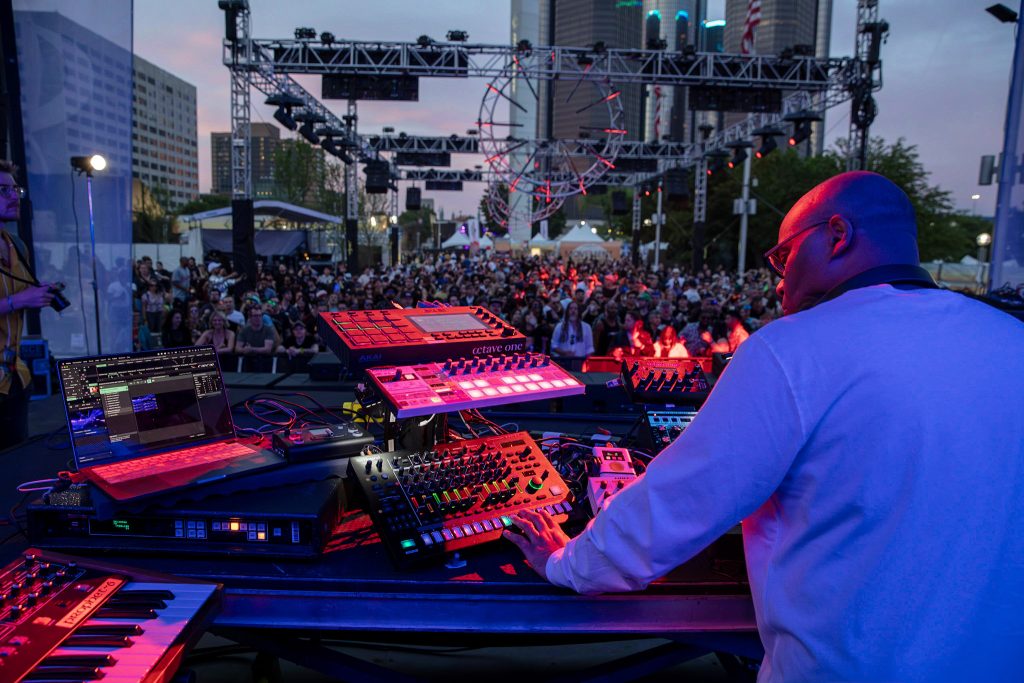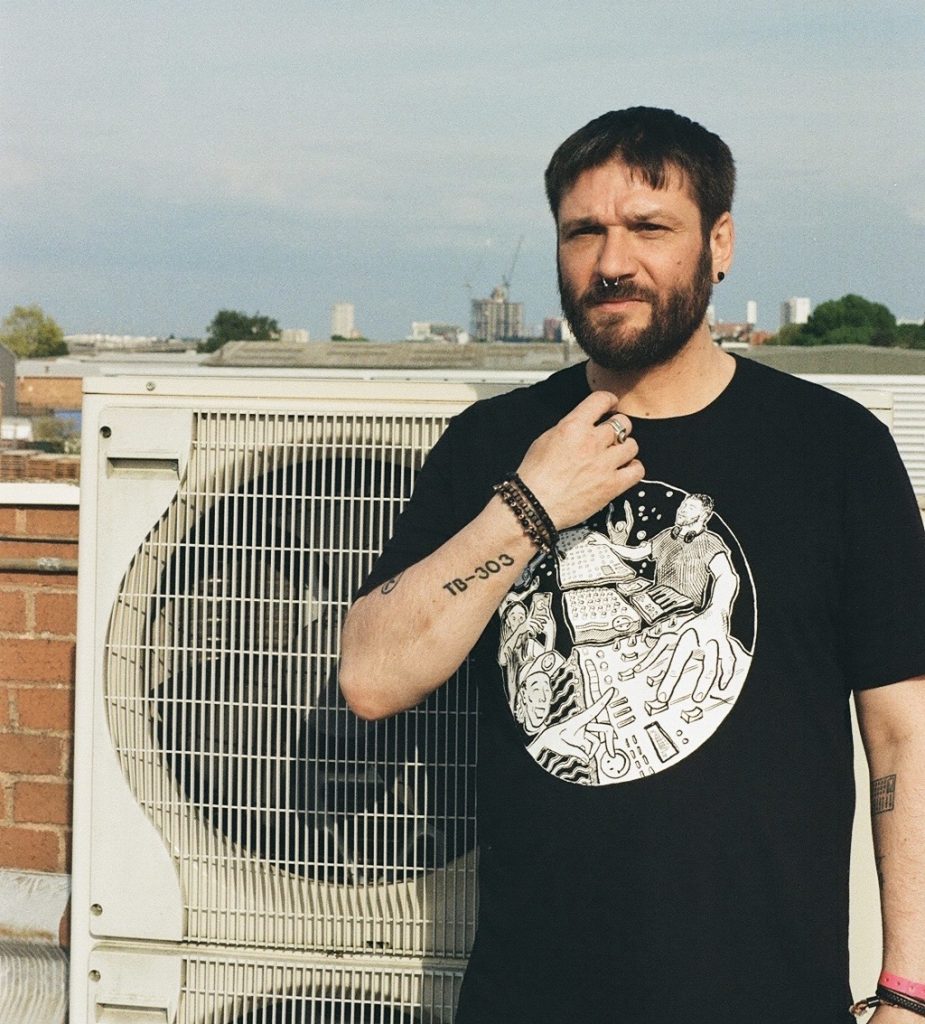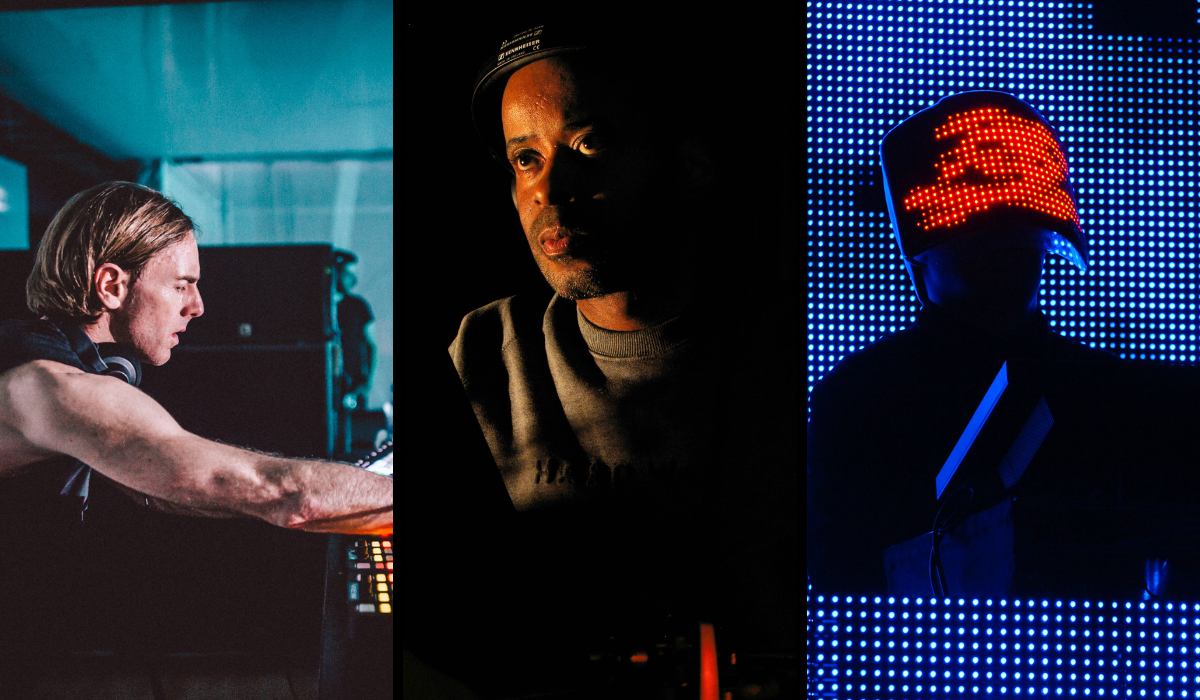When we think about electronic music in a performative setting, DJs usually come to mind. This makes sense, as electronic music often occurs in clubs. Plus, thanks to continuing advancements in gear and technology, the DJ role has become ever more fluid and creative. However, electronic music has another side that we can’t ignore. Live electronic music performance creates a unique interaction between performer and listener. It can be exciting, creative, and even transformative for the artist and the audience.
A History of Live Electronic Music Performance
Electronic artists have been performing live since the beginning of electronic musical instruments. In the 1960s, experimental duo Silver Apples took their homemade synthesizer, the Simeon, on the road, jamming on primitive oscillators. Tangerine Dream was more complex in approach. The group started with organs and early mammoth modular synths in the late 1960s and early 1970s before evolving into a more streamlined affair with the latest polyphonic power, like the JUPITER-8.
Kraftwerk and Yellow Magic Orchestra hijacked the idea of the pop band and made it into a very electronic affair. Live performance with synthesizers also entered the world of classical music when Philip Glass took his avant-garde opera, Einstein On The Beach, on the road in the late 1970s.

Live electronic performance also moved from theaters into clubs, first in the disco era of the 1970s and then later in the 1980s with house and techno. Patrick Cowley pioneered electronic disco and hi-NRG and performed with diva Sylvester in clubs. Detroit techno artist Juan Atkins experimented with different live configurations under various monikers throughout his career. At the same time, Underground Resistance employed a hybrid method of live synths atop Jeff Mills’ furious DJing.
These sonic cross-pollinations were also occurring elsewhere. In early ’80s Minneapolis, Jimmy Jam would DJ and live sync to his TR-808, while Chicago legend Ron Hardy was also famous for using drum machines as extensions of his DJ sets.
"With the explosion in popularity of rave music in the early 1990s came a new generation of electronic artists, who often brought fresh waves of energy to the stage."
Rave On
With the explosion in popularity of rave music in the early 1990s came a new generation of electronic artists, who often brought fresh waves of energy to the stage. Aphex Twin, Squarepusher, Orbital, and Underworld are just some artists from this era who built reputations as live acts. While some do both DJing and live PAs, many, like Detroit crew Octave One, have defined themselves by their live sets.
After years of DJs stealing the festival limelight, live electronic music performance is making a big comeback. Dutch techno artist Reinier Zonneveld set a new Guinness World Record for the longest solo electronic music live set. He performed with hardware for an astonishing 11 hours and 11 minutes. Contemporary artists like Rachel Collier find inspiration by combining hardware like the FANTOM-06 with Ableton for a hybrid approach. They do so while using modern delivery platforms like streaming to reach new listeners.

Take It to the Stage: Setup Examples
There are many ways to incorporate electronic equipment into a compelling live performance. From a table full of blinking boxes to a more traditional band setup, anything goes. The method you choose will largely depend on your music style. Still, your personality and goals for performance come into play as well. What follows are several different setup ideas and the artists that make them work.
Jam the Box
Favored by groove-based techno and house producers, the tabletop jammed full of drum machines, sequencers, MIDI controllers, and other boxes harkens back to the early days of dance music when all one needed was a TR-909, a TB-303, and a SH-101. Modern box jams are more complex and may even include computer DAW integration. Yet the old-school spirit of letting the gear rip is always present.
One underground artist who makes the most from a gig bag full of boxes is Saytek. Fully committed to the live aesthetic, the UK-based artist performs live exclusively. Even his records are edits from live performances, as “IYNDUB01 (Live)” from the recent R&S compilation, In Order To Dance 4.0, shows.
"From a table full of blinking boxes to a more traditional band setup, anything goes. The method you choose will largely depend on your music style."
Roland gear features in his live rig, with the MC-707 playing an important role. “I have been using the MC-707 since 2020,” he tells us. “It’s a great production and live performance tool. There is a lot of power for designing sounds, and it also has many classic Roland drum and synth sounds already in the box. Its clip-based sequencer, fader, pads, and knobs make it great for jamming out my creations live.”
Saytek also recently added the S-1 Tweak Synthesizer to his rig. He uses it for everything from SH-101-style acid patterns to techno chords. “It’s also very portable,” he adds, “which is super handy as a touring live act.”

Synths Upon Synths
If multiple stands stacked high with synthesizers sound more like you, you’re in luck, as this is also a tried-and-true setup for live electronic music. In fact, it goes way back, with a performance pedigree that includes powerhouse groups as disparate as Yes, Duran Duran, and Survive. Whether you’re performing as part of a group or solo, this could be the format for you if you like to get your hands on the black and whites.
One artist who rocks the racks of synths is Finnish synth wizard Kebu. With a style that blends modern dance music with classic synth flavors, his performances utilize a multitude of synths within arm’s reach. His current all-analog synthesizer setup includes two Alpha Juno-2s, a JUNO-60, an MKS-70 Super JX, a JX-8P, and a JUPITER-6, among other gear. He augments this with a TR-808 and other analog drum machines. Everything connects via MIDI and is powered by a hardware sequencer, although he also plays many parts live.
"If you play as part of an ensemble, you may want a single instrument that can offer support in several different contexts."
Phantom in the Machine
So far, we’ve looked at live rigs that favor solo performance. If you play as part of an ensemble, you may want a single instrument that can offer support in several different contexts. Bobby Avila plays in R&B superstar Usher’s band. It’s an electronics-heavy sound that benefits from FANTOM’s ability to be whatever he needs to reproduce the sounds from Usher’s hit records live. “On ‘Love in this Club,’ I have nine banks full of patches to keep the authenticity of the records,” Bobby says. “We were in a safe comfort zone, knowing our tools were there for us when we had to make the adjustments before we even got on stage.”
The FANTOM’s ability to do a little bit of everything makes it indispensable for modern artists. “I’m loving the FANTOM-06,” artist Rachel Collier says in a live video. “Not only is it a standalone synth, a sequencer, a sampler, a very good MIDI controller, it also has—wait for it—DAW integration.” For the modern performer, being able to control your DAW from the synthesizer itself is very handy.
Beats Happening
Not every live electronic music performer uses instruments with black and white keys. Some find performance inspiration in SP phrase samplers. These unique beatboxes give them the freedom to express themselves in novel ways. Interestingly, the use of SP samplers has grown independently and in parallel in two very different genres: hip-hop and indie rock.
On the hip-hop side, artists like Sarah, the Illstrumentalist, and Khyro use the SP-404 to jam out lo-fi and warm beats live, triggering phrases and dialing in effects on the fly. In contrast to the laidback, almost lazy beats, their hands fly fast and furious, ensuring that this is an engaging performance despite the languorous tempo.
Roland SP devices give many indie artists the freedom to bring the forward-thinking elements of their records to the live performance arena. One of the most famous is Panda Bear from Animal Collective, who started with a BOSS SP-303 on Person Pitch and continues to use SP devices live. Grimes is another SP fan, spotted using an original SP-404 in a live performance on radio station KEXP.
"For many indie artists, Roland SP devices give them the freedom to bring the forward-thinking elements of their records to the live performance arena."
Shaking it Up
Eurorack has shaken up the synthesizer world in the last decade, bringing a fresh wave of interest to synthesis and live performance. Yes, it’s entirely possible to perform live with Eurorack. And, as you’d expect from such a wide-open platform, there are as many ways to go about it as there are musicians.
One approach is to use your Eurorack setup like a traditional synthesizer, setting up the patch beforehand. Mad genius Look Mum No Computer demonstrates that in a performance video, where he pairs a Roland SYSTEM-500 with a TR-8S drum machine for a noisy, melodic jam. Another strategy is the live patch, where you start with a blank slate and patch as you go. This is pure improvisation, creating both a sound and a song on the spot.
Last Night a DJ Rocked My Life
We started by saying that live electronic music performance offered an alternative to DJing. However, there’s no reason that DJing and live performance have to be separate concepts. As mentioned, Detroit techno pioneers Underground Resistance performed as a keyboard/DJ team in their early days.
One common occurrence is DJs incorporating drum machines into their sets. Techno jocks are especially enamored of the TR-909’s ability to add weight and punch to otherwise limp records. Acid man Richie Hawtin famously mixed a 909 into his Decks, EFX & 909 performances. Another fan of bringing drum machines into his sets is electro legend, Egyptian Lover. He regularly performs live with a TR-808, even going so far as to pick it up and cradle it in his arms as it belts out beats.
“Follow your heart musically. Take risks with your live performance. It’s better to be live and make a few mistakes than to play a pre-arranged set."
Saytek
All The Way Live
Live performance can be a wild, beautiful, and free energy exchange with an audience. Embrace the possibility of failure; paradoxically, you will succeed even more. “Follow your heart musically. Take risks with your live performance,” stresses Saytek in a final piece of advice. “It’s better to be live and make a few mistakes than to play a pre-arranged set. The crowd may not technically know the difference but will feel it on the dance floor.”






